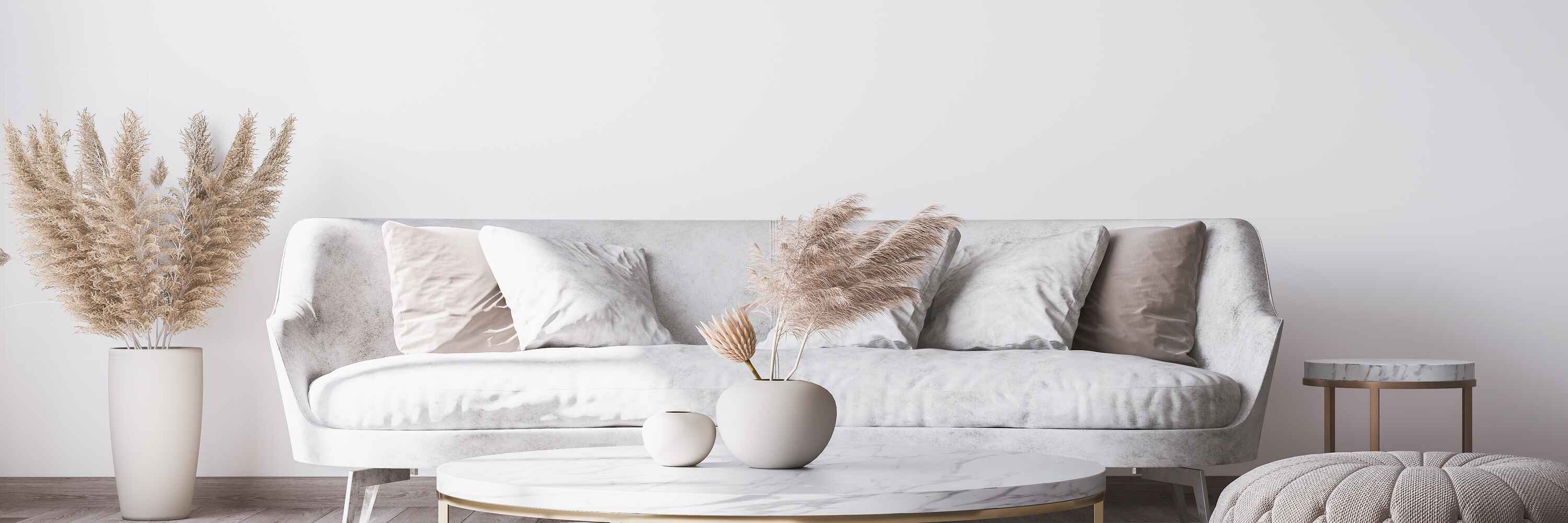A Homeowner’s Guide to Creating A Sensory-Friendly Space For Individuals with Sensory Processing Disorders
April 04th, 2021
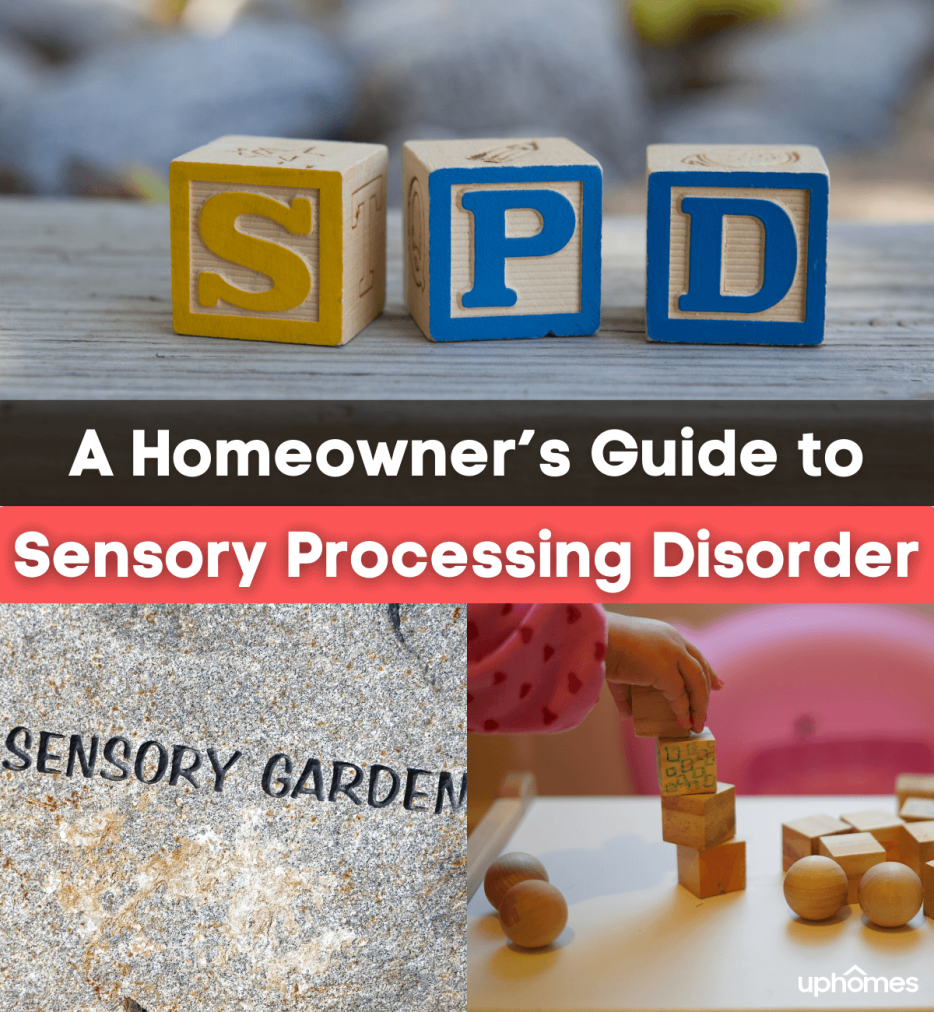
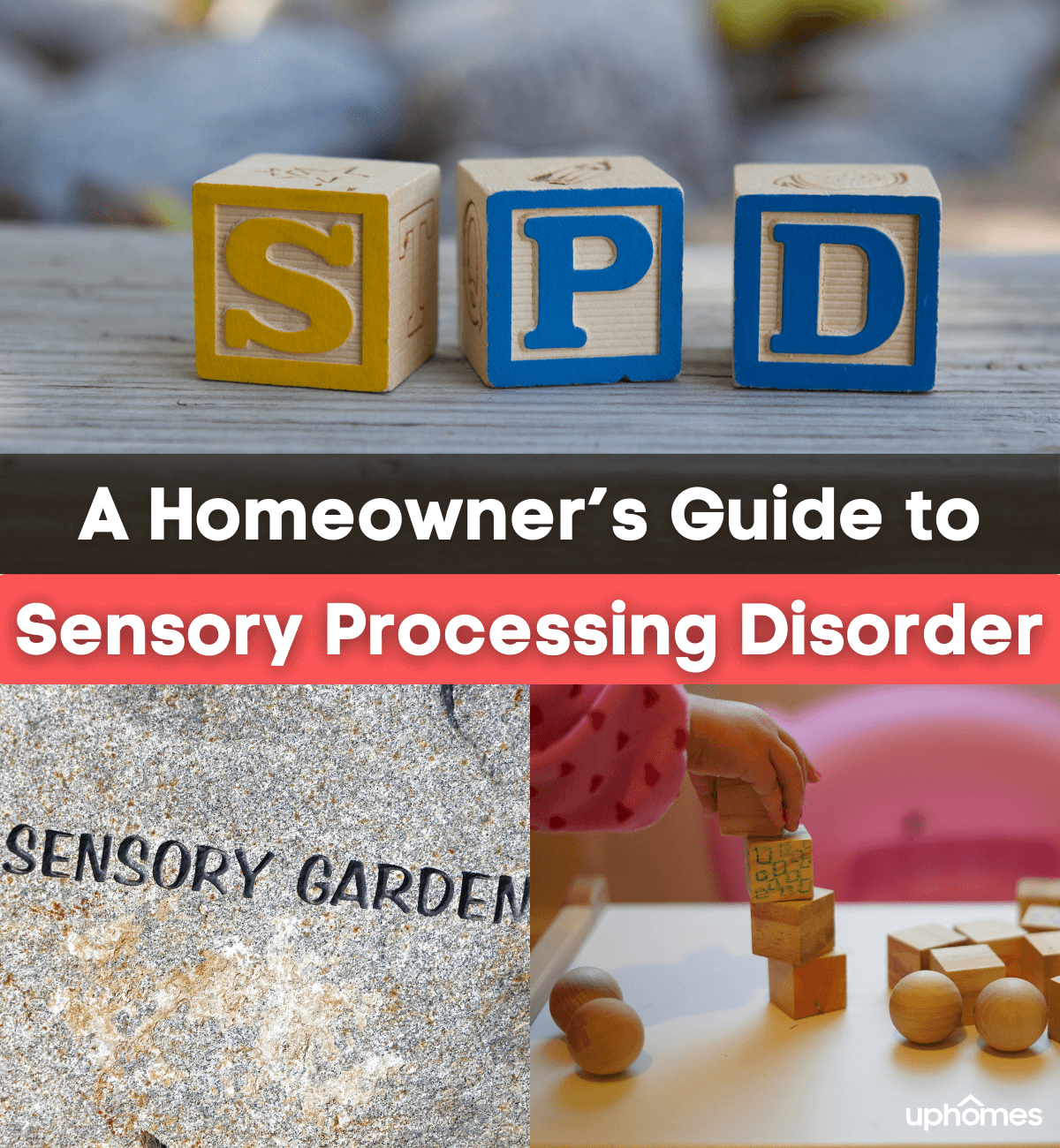
A Homeowner’s Guide to Creating A Sensory-Friendly Space For Individuals with Sensory Processing Disorders
For individuals or families with children that have sensory processing disorder, it is important for homeowners to create a safe space for those dealing with this condition. A sensory processing disorder is a condition with which an individual has trouble receiving and processing information through the five senses. These disorders are seen more in children but can also affect adults in everyday life. Experiencing overstimulation or lack of stimulation leads to individuals feeling uncomfortable and can hinder their ability to learn or socialize with others. Children with Autism, ADHD, or OCD are also prone to sensory disorders. For individuals impacted by a sensory processing disorder, sounds may seem painful, bright lights or colors can become overwhelming and certain textures and materials can become unbearable to touch.
Existing on a spectrum, children with a sensory processing disorder may start demonstrating their sensitivity to their surroundings as fussy babies who then deal with anxiety and become prone to throwing tantrums as they grow older. When thinking about sensory input and processing the environment, there are two types of sensory processing categories to be aware of. Children can be experiencing hyper sensitivities or hypo sensitivities which are the different ways that sensory input is perceived.
Individuals with hyposensitivity or “sensory seeking” tendencies are looked at as being under-sensitive. Potential signs of sensory-seeking include:
- not recognizing personal space
- making loud noises
- inability to pick up on social cues
- frequently touching objects and people
- having a high pain tolerance
- thrill-seeking
Hypersensitivity, on the other hand, is when an individual is oversensitive and in turn, avoids certain experiences. Potential signs of hypersensitivity include:
- avoiding touch
- being easily scared
- finding clothes too scratchy or itchy
- finding lights too bright
- avoiding crowds
- easily affected by noises
- clumsiness
Looking at some statistics related to sensory processing disorders, 5 to 16% of all school-aged children are affected. In the United States, 1 in 20 children experience issues regarding sensory processing. Leading to problems in coordination, reading, learning, and socialization, children with sensory processing disorders may differ in behaviors. While there may be no exact medical diagnosis, children with this condition can receive help through treatments and sensory integration. Through these treatments, behaviors can be challenged and the child can learn appropriate responses to stimuli. With that being said, it is important for individuals with sensory processing disorders to have a sensory-friendly environment in the home in order to encourage appropriate behaviors while providing a safe place to learn.
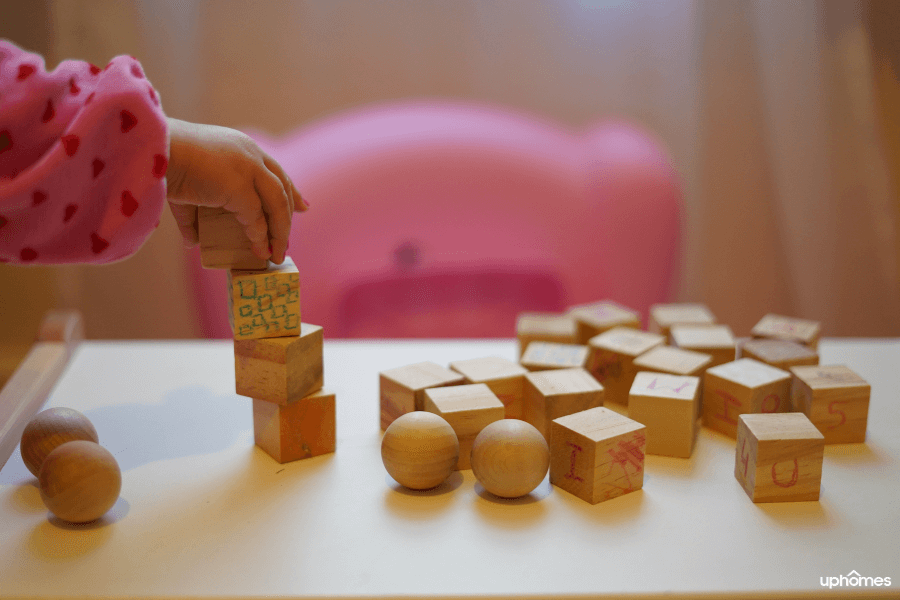
Creating a Sensory Room
What is a Sensory Room?
A sensory room is a space created to provide children and individuals with a sensory processing disorder a safe area to calm and relax themselves. By providing an area to decrease negative behaviors, this therapeutic environment leads to increased motivation and focus. Not only does creating a sensory room lead to improved positive behavior, but it is also affordable to create. The best part is that this sensory-friendly space does not have to be an entire room and can instead be just a wall or private area of the home. By creating an at-home sensory room or wall, children will be able to explore their senses and learn about their environment.
Designing a Sensory Room
The first thing to do when creating a sensory room is to designate an area that is safe and free of obstacles. Clear the space of any sharp objects or loose cords. Stay away from harsh lighting and opt for a corner lamp or hang string lights on the ceiling instead. Choose to paint the room a cool and neutral color such as tan, grey, blue, or light yellow. Some elements to feature in your sensory room include:
- Large pillows or mats - Relaxing, calming and soothing to the senses large mats and pillows can be a great addition to any sensory room.
- Plush animals and toys - Animals and toys can create a healthy social interaction and sensory processing - the plush feel can calm them down when under stress.
- Bean bag chair - Often used for occupational therapy, bean bags are a great sensory tool used for seating and sensory spaces.
- Weighted blankets - These are sensory tools that assist with calming and sleep.
- Therapy balls - Therapy balls are an effective way to help ease anxiety when under stress.
- Bouncing balls - These are a great way for children to have some fun in a calm setting whether they use them just for sitting or for bouncing all around.
- Books - Whether educational or fictional books will help to develop reading skills, thought processing, story-telling, and more.
- Whiteboard to draw on - Children can use the whiteboard to draw on and create visual patterns and drawings that allow them to express their creative side in a calm setting.
- Fidget items - These are great tools or toys for helping to calm and relax when anxiety may kick in.
- Legos - Legos and Lego walls allow for great fine-motor-skills activities, and are a great way to provide a calming activity for a child.
- Sensory break cards or boxes - Great way to help build hand-eye coordination.
- Mirrors or Mirror Walls - Children can write or draw on these with markers or shaving cream, and allows them to use visual feedback and play in a calm setting.
Considerations When Creating a Sensory Room
- Are there opportunities for swinging?
- Are there opportunities to balance on beams or boards?
- Are there opportunities to bounce or climb?
- Are there opportunities for a person to sit with their backs against the wall?
- Can a person sit and see the whole room?
- Are there quick exit routes?
Using Sensory-Friendly Materials Throughout Your Home
For those with a sensory processing disorder, individuals may experience touch sensitivity in relation to certain textures. For individuals impacted by a sensory processing disorder, certain textures n clothing, household items, or food can be uncomfortable and overpowering. For some people, even the feel of a hug can sometimes become too overwhelming.
Considerations When Decorating a Sensory-Friendly Space
- Is there an area designed for certain textures to be felt or stroked?
- Are there items to provide different feelings on the skin, such as sand or water?
- Are there items to provide pressure if needed such as wooden massagers?
- Are lamps too bright or rooms too vivid when it comes to visual stimulation?
- Is the space messy or disorganized, which can oftentimes be upsetting to individuals with a sensory processing disorder?
- Does your area limit the overabundance of sounds? If not, is it possible to incorporate rugs, heavy curtains, and other noise-reducing furniture?
Understand Aversions to Textures
Being able to understand aversions to certain textures, as well as designing a home that avoids textures that are upsetting, will allow for an environment where the individual with touch sensitivity can learn and grow. By adding a variety of different textures into an area while keeping aversions in mind, individuals with sensitivities can find comfort in textures that are reflected in furniture, floor coverings, accessories, and wall coverings in the home. Although every person is different, some common guidelines include selecting furniture and textures that are fluffy and soft versus rugged or coarse. Some examples include leather and velvet textiles, sleek tables, and soft pillows. Make sure to remove any textures that the individual finds upsetting and uncomfortable.
Make the Space Durable
Individuals with sensory processing disorders often exhibit stimming behaviors, which are repetitive actions that heighten one of the five senses. To create a home that can withstand curious hands and repetitive behaviors, prepare by purchasing materials and furnishings that are durable.
Incorporate a Sensory Garden
Sensory gardens incorporate all of the five senses and have been shown to help with anxiety and fidgeting. Studies also show that sensory gardens can help children develop their non-verbal communication skills. Elements that make up a sensory garden include scented and edible plants, sculptures, water features, and touchpads.

Changes for the Home
For those dealing with hyper and hypo sensitivities in regards to touch, consider making changes to the home. The following are some examples of changes one can make
- Add nonslip surfaces to the bathroom floors and tub
- Add grab bars and safety features throughout the home
- Add soft warm rugs and carpeting throughout the home
Creating a Soothing Visual Setting in the Home
Experiencing light sensitivity is common for those with sensory processing disorder or autism; in fact, about 90 to 95% of individuals with Autism deal with light sensitivity. When there are difficulties processing light and visual stimuli, brightness and overexposure to certain lighting can cause a negative and painful response. Since those with light sensitivity perceive lighting differently, choose to incorporate as much natural lighting into your home as possible. Minimize fluorescent lighting, keep light dim, and be aware of possible glare.
Keep in mind that the colors on the wall and the colors of interior spaces are important to remember. Many individuals with a sensory processing disorder and Autism also suffer from color sensitivity. In order to create a soothing and peaceful environment in the home, pay attention to the needs of the individual. Since those with this condition perceive colors, lighting, and patterns differently from others, ask the individual or child how certain colors make them feel in order to create a relaxing space. Since those with color sensitivity tend to see colors more intensely, choose to decorate and paint with neutral and monochromatic colors instead of bright and bold colors.
When designing this calm and soothing setting in your home, consider asking:
- Lighting: What is the lighting like in the rooms, both natural and artificial?
- Colors: What color are the walls? Are curtains, carpets, and furnishing patterned? Are there non-reflective surfaces? Are colors neutral, monochromatic, or muted?
- Clutter: How many things are in the room that would require visual awareness and recognition? Are there dedicated organization spaces to prevent clutter?
Reducing the Sounds in Your Home
Children and adults suffering from sensory processing disorders and autism also have trouble with auditory stimuli. Known to have heightened hearing senses, individuals may be affected by noises that others pay no attention to. They may even pick up on sounds and noises that no one else can hear. These noises can quickly become painful and can often cause anxiety or a panic attack if the individual is uncomfortable or does not understand where the noise is coming from. Dealing with an auditory processing disorder means that there are steps to take towards reducing sounds and unwanted noises in the home. In order to work towards noise control, it is important to understand the individual’s noise sensitivities, provide a safe environment that reduces undesirable noise, and allow for distractions and therapy.
When designing a safe place in your home for noise reduction, consider asking these questions when designing your home:
- Are there regular external sounds, such as traffic, children playing, or building works?
- Are there regular internal sounds, such as clocks ticking, refrigerators humming, or music?
- Is it possible to reduce external sounds from permeating to the inside?
- Is there a way to reduce internal sounds for each individual, such as earplugs?
One of the best ways to work towards noise control and noise reduction is to focus on flooring in the home. Hardwood flooring amplifies sounds and footfalls so consider replacing any hardwood flooring with carpeting or noise-dampening floor mats. Another good idea is to invest in a carpet pad or rugs to place all over the home to further dampen sounds. Not only will noise be reduced but carpeting and nonstick flooring will further protect individuals with coordination problems from slipping and falling. Make sure to research the best flooring options that will make sense for both your home and the needs of the individual. While one of the main things to consider when reducing sounds in your home is internal noises, do not skip out on reducing noise from external sources. Outdoor noise pollution often leaks into the home through windows and insulation. Hearing outdoor noises can be stressful and can often cause issues sleeping at night. With that being said, consider installing insulation into your home that is specifically designed to dampen and absorb sounds. If adding insulation is not possible, focus on adding an extra layer of drywall to your home. Another solution is to install thick windows with noise-reduction glass.
To help those with hypo or hypersensitivities in regards to an auditory processing disorder, make sure to focus on the individual’s room first when making changes to the home. Certain types of sounds can be painful depending on the person, so choose audio equipment that is high quality and limits undesirable noise or feedback. While many may react badly to certain noises, others may just choose to completely ignore sounds; this may mean that if a fire alarm is going off then your child will pay no attention to it. If this is the case for you, purchase visual fire alarms and smoke detectors instead.
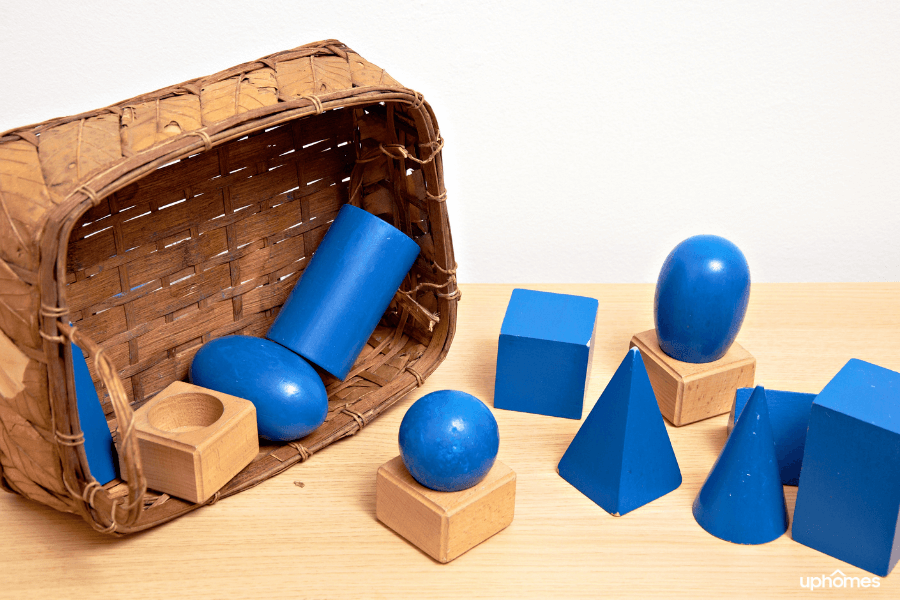
Controlling the Smells in Your Home
Those with smell sensitivities may react badly to certain odors or not react at all. The sense of smell is interesting in the way that it can cause emotional responses or can trigger a memory. Individuals suffering from sensory processing disorder in regards to smells may have trouble with the intensity of smells, odor identification, and recalling memories triggered by certain smells. An interesting thing to note is that those with high functioning autism seem to elicit various emotional responses to different odors. Much like auditory sensitivities, individuals may be affected by smells that no one else pays attention to. Sometimes causing distress or panic attacks, pay attention to an individual’s facial expressions, increased heart rate, or any discomfort regarding odors and smells.
When designing your home with the intent to control and eliminate odors, ask yourself:
- Are there any smells outside of the room or building that permeate through the walls, windows, or doors?
- Are there any smells from indoors that can cause distress and discomfort, such as cleaning products, perfumed products, or foods?
Instead of using strongly scented cleaning products, air fresheners, and other household products, seek out low odor chemicals, finishes, and building supplies instead. Choose low odor paints and natural materials in the home which tend to have less odor than synthetic materials. Proper ventilation in the home is also a must to ensure that odors and smells are filtering out of the home properly. For those with hypo and hypersensitivities, use certified HEPA filters in your HVAC, and understand how volatile organic compounds can make an appearance in your home.
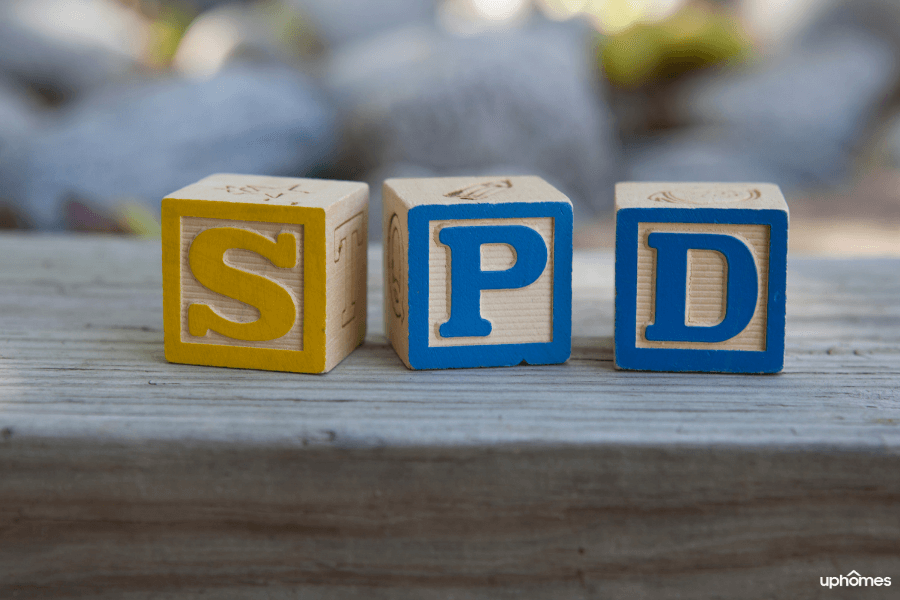
Protecting Your Child at Home
Home safety is a must for children with sensory processing disorder and Autism. For any parent with an individual who displays uncomfortable behaviors regarding the senses, keeping the home a safe place is the only option. In order to ensure a safe environment, there are many modifications and steps to take towards creating a peaceful and relaxing space for your child. Keep things organized and clutter-free, put away any hazardous items, use locks and alarms when needed, safety-proof any appliances and electrical outlets, reduce any risk of possible burning or scalding, and install fences around water especially if you have a home pool.
When Should You Move Instead of Modifying?
While modifying your home to meet the needs of your child dealing with sensory processing disorder may be one of the best options, it may not be the most feasible option for you and your family. While creating a sensory room to calm your child may be relatively affordable, changing flooring and investing in soundproof insulation may come with a high price tag. When this happens, instead of modifying your current home it might make more sense to move entirely. Perhaps you will find a home in Charlotte, North Carolina to fit your needs.
If you are a family that is currently renting or living in an apartment, condo, or property type that is not modifiable, this may be another reason to consider moving. When factors beyond the home can not be controlled or mitigated for creating a sensory-friendly space, it might be time to sell your home and look for something else. If you and your family are interested in buying an already existing home, you must first decide on the location that you want to live in. Not only is location one of the most important factors in real estate but it is one of the top things to look for when buying a home. To avoid making a common mistake when buying a home, make sure to find the right real estate team to help you on your search.
If new construction is more of your style then it might make the ability to modify your home a whole lot easier. One of the many pros and cons of buying a new construction home is that since everything will be brand new, you will be able to customize your home from start to finish. This means that any modifications that are needed will be designed with you and your family in mind. When deciding on if it would make more sense to buy an already existing home or building your own, it will be important to compare costs and to consider exactly how much money it would cost to build your own house with modifications in mind.
Additional Sensory Processing Resources
For any additional information on resources available for homeowners with disabilities, consider the following:
- Understanding Sensory Processing Issues: Learn more about sensory processing disorder and the response of certain sounds, sights, textures, smells, and tastes. Understand the difference between hyposensitivity and hypersensitivity and the characteristics associated with sensory processing disorders.
- SPD Support - The boards at SPD Support are a great source of support, understanding, and friendship.
- Sensory Processing Disorder Parent Support - A community of support for parents with children who have been diagnosed with sensory processing disorders.
- STAR Institute - A great resource for understanding sensory processing disorder with tons of information on treatment, research, and education for SPD for people of all ages.
- Autism Speaks: Autism Speaks is an organization dedicated to educating the general public about Autism and recognizing the signs of Autism while providing the right resources for families and individuals.
- Autism Society: Autism Society is an organization raising awareness and advocacy towards Autism while providing a way for individuals to be involved. Donate, volunteer, and learn more about Autism.
- Designing a Sensory Garden - A resource for helping build sensory gardens and how to pick the right plants and beds to get started.
- Sensory Room Equipment - Multi-sensory environments or "sensory rooms" engage special needs children and adults to promote heightened intellectual activity, relaxation, and motivation.
- Designing for Children with Sensory Integration Disorders - A handbook for residential designers looking to create sensory-friendly environments at home.
- Sensory Toys for All Ages - A trusted source for toys for children with special needs.

Ryan Fitzgerald
Hi there! My name is Ryan Fitzgerald, and I am a REALTOR®. My goal is to help you learn more about real estate through our Real Estate Blog! Hopefully, you enjoyed the above blog post and it found a way to provide help or value to you. When you're ready to buy or sell a home of your own let us know here. Please feel free to join the conversation by dropping us a comment below.

